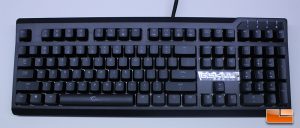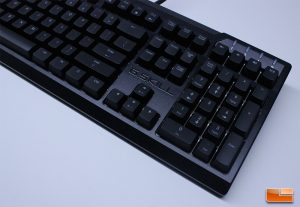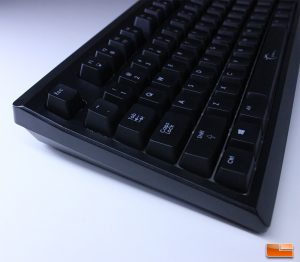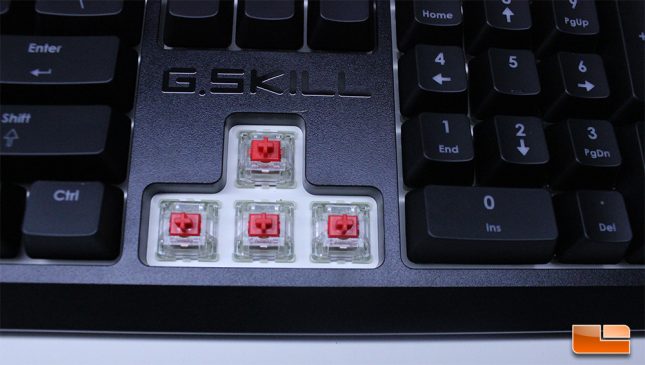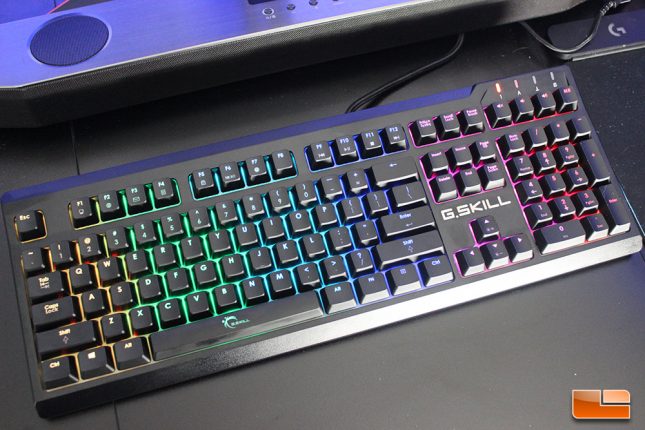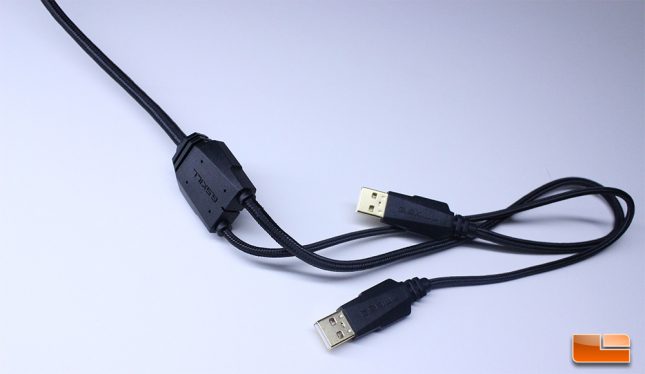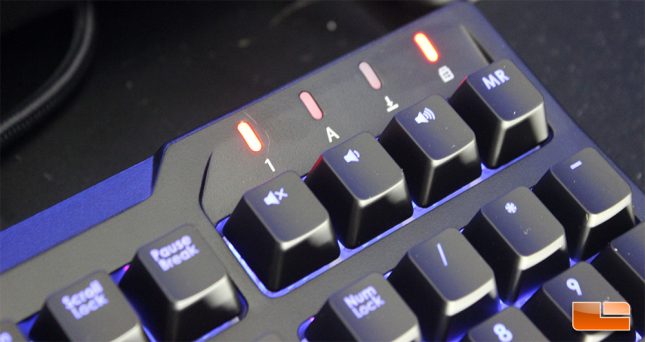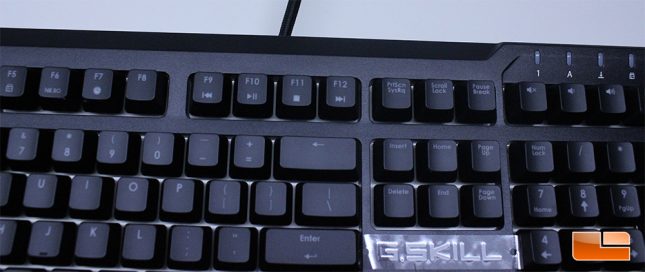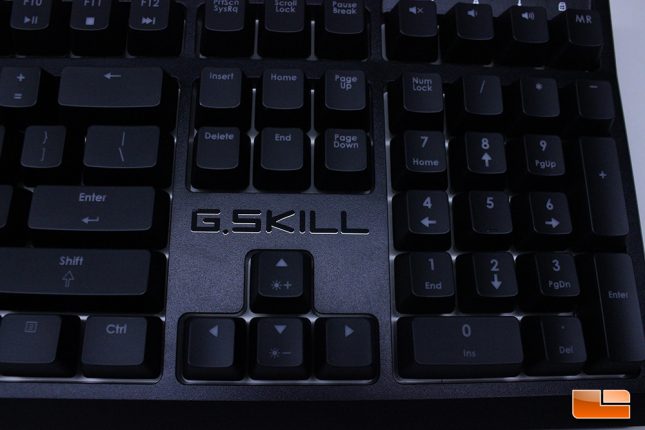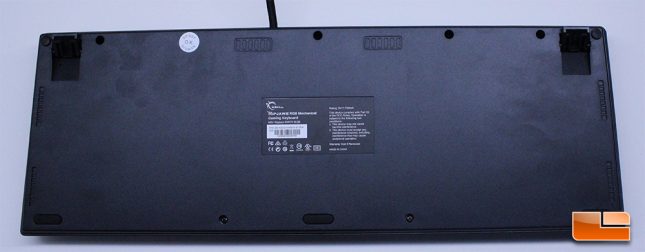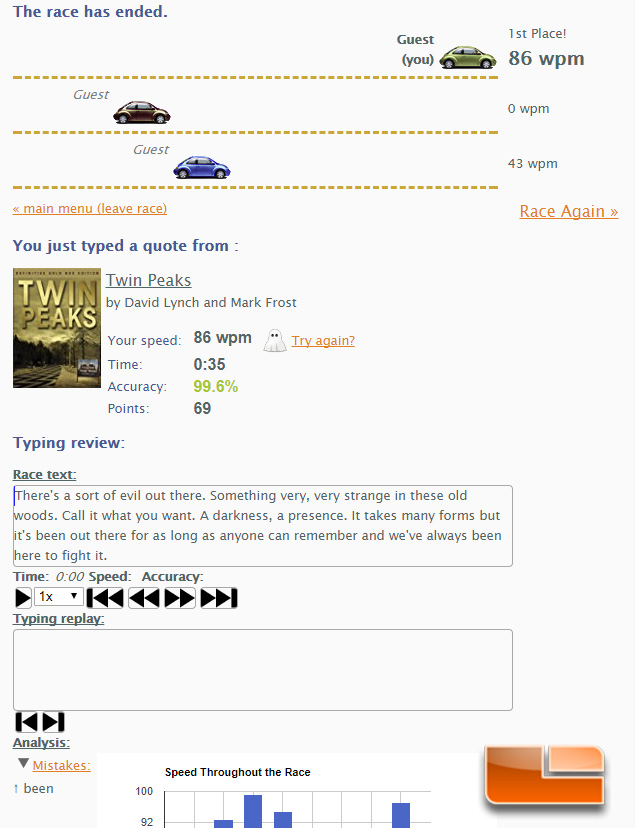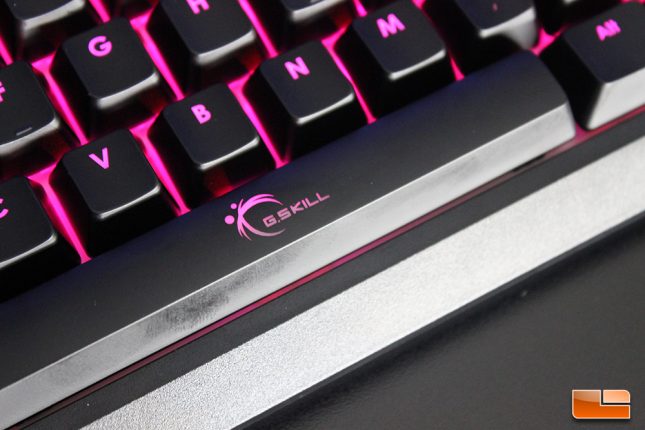G.SKILL RIPJAWS KM570 RGB Mechanical Gaming Keyboard Review
G.SKILL RIPJAWS KM570 RGB Mechanical Gaming Keyboard – A Closer Look & Testing
The frame of the G.SKILL KM570 RGB is plastic, rather than having a steel or aluminum top plate, but the plastic here is very durable, giving minimal flex when I twisted it, without coming close to creaking or cracking. Shaking the G.SKILL KM570 RGB was reassuring, as there was no rattle and the keyboard gave a general feeling of quality.
The front slope of the keyboard was comfortable and I found that my hand was able to get very close to the keyboard without actually touching the edge, which allowed for a very comfortable experience. G.SKILL did a good job of keeping the profile pretty tight on the KM570 RGB and while it’s not a thin keyboard, the bezels are tight and lend to a pretty compact design.
When you remove the key caps from the KM570 RGB, you find the Cherry MX switches underneath sitting on top of a white plastic base plate. G.SKILL is using Cherry MX switches without LED housings built-into the base on the KM570 RGB, with the LED’s PCB mounted instead. The RGB lighting on the Ripjaws KM570 RGB looks good and has been implemented very nicely, with the white backplate reflecting the lighting well.
Since the LED’s are mounted on the PCB of the KM570 RGB rather than within the switch housing, the lighting isn’t as intense as it is on some RGB keyboards, but rather has a more diffused, subdued look that is really even and smooth looking across the white back plate that the switches sit on.
The USB cable of the Ripjaws KM570 RGB is six feet long, which should be plenty adequate for most users. The USB cable of the KM570 RGB has a smooth braiding on it and is a bit thick, but not as thick as the cable on the Corsair Strafe RGB. The USB cable is not removable, so damaging the cable beyond repair will render the keyboard useless. There are two USB cables that come out of the end of the main cable on the Ripjaws KM570 RGB. There is no USB pass-thru on the KM570 RGB to warrant the additional USB cable input and from what I could tell, you don’t need to install both cables for the keyboard to function properly on a USB 3.0 port. I do believe that the secondary cable is to provide proper power and bandwidth for the RGB lighting to users with USB 2.0 ports, but I could find no documentation from G.SKILL about why they are using two cables in the manual or quick start guide.
There are indicator lights that sit slanted on the upper right hand corner of the KM570 RGB and they all light up red, which unfortunately can’t be changed. Besides the typical NUM, CAPS and Scroll Lock indicators, there is a Windows key lock indicator light to let you know that the Windows key has been disabled.
Pressing the FN key in combination with the F-keys allows for various functionality, including media control. FN+F5 turns on the previous mentioned Windows key lock, which can come in very handy during games to keep you from accidentally toggling out during an intense firefight. NKRO is toggled between 6-Key and Full Key with FN+F6. G.SKILL programmed F1-F4 to launch various apps, such as web browser and calculator, when used in combination with the FN-key.
The Ripjaws KM570 RGB certainly isn’t short of branding, with a G.SKILL spacebar and chrome G.SKILL logo sticker above the arrow keys. I don’t really mind the G.SKILL branding here, as it looks fine and doesn’t detract from the keyboard, though the silver logo does take away from the simple, somewhat industrial design angles of the frame. The G.SKILL space bar looks nice, as the logo allows for RGB lighting to show through and gives just a slight bit of texture to the middle of the space bar to help aid with tactile feedback.
The bottom of the Ripjaws KM570 RGB is pretty boring, just like a keyboard should be. There aren’t any routing holes and there are some basic, single-level adjustment arms on the top corners that don’t offer much in the way of changing the height of the keyboard by any major factor. Rubber supports are at the front of the keyboard, spaced in three sections. The KM570 RGB does a great job of holding in place, but I do think the height adjustment feet could be improved upon quite a bit, as the existing implementation is basic and doesn’t have multi-level adjustment, offering a difference that makes them barely worth including.
RIPJAWS KM570 Mechanical Keyboard – Typing and Gaming Results
The switches and stabilizers on the Ripjaws KM570 RGB have been implemented very well. I find stabilizers on brand new keyboards from reputable manufacturers that are often times poorly implemented, leading to noise or sloppy mechanism. Given the value aspect of the KM570 RGB, I found myself pleasantly surprised by the typing experience the keyboard offered, as each key was properly implemented and there weren’t any major issues to note in regards to quality. I did notice that some of the larger keys, most notably escape, did rock a bit on their stabilizers when I attempted to rock them, but there were absolutely no issues during typing and the tolerances were great when compared to other keyboards in this price range.
I was able to type accurately and quickly on the KM570 RGB, averaging around 90 WPM on TypeRacer, which is my typical average when using a decent keyboard that I am familiar with. The KM570 RGB provides a very reassuring, consistent typing experience and I felt very confident when doing typing sensitive tasks. Gaming with the KM570 RGB was an enjoyable affair, as the Cherry MX Red switches provide pretty quick actuation and a smooth, reassuring rebound on every key stroke. The key caps that G.SKILL has implemented on the KM570 RGB are made of ABS and feel great to type on, with a smooth surface and properly rounded edges that don’t stab the fingers, an issue I’ve constantly run into on gaming keyboards.
I downloaded the latest software, version 2.01 with FW23, for the KM570 RGB from the G.SKILL download section, which was very easy to access from the product page. During the installation, a firmware update was applied and the keyboard was momentarily offline, but it came back before the update was completed and the process went very smoothly. I found the G.SKILL software to work well and it complemented the keyboard nicely, with everything laid out well and in an easy to use manner. Changing settings like polling rate and key repeat rate was very easy to do, as was adjusting all of the RGB settings, with everything laid out in easily understood sections. The G.SKILL KM570 RGB software allows for macro recording and programming of any button.
I really enjoyed my experience with the G.SKILL Ripjaws KM570 RGB Mechanical Keyboard. G.SKILL implemented the Cherry MX switches properly and the whole package is rounded out nicely, with an excellent typing and gaming experience provided. Let’s see how the G.SKILL Ripjaws KM570 RGB stacks up on the next page.

